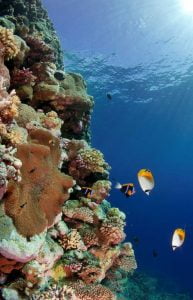Exploring History Beneath the Waves: The 5 Best areas on the ex-HMAS Brisbane Wreck
Diving enthusiasts and history buffs alike find themselves drawn to the captivating allure of shipwrecks.

 All diving involves a degree of risk, because, after all, we are air-breathing mammals who have no sensible reason to be underwater. If we accept this premise, and admit to ourselves that we are voluntarily entering an alien environment, we are more likely to approach our diving with a sensible degree of caution. We must also acknowledge that we rely totally on our equipment while diving.
All diving involves a degree of risk, because, after all, we are air-breathing mammals who have no sensible reason to be underwater. If we accept this premise, and admit to ourselves that we are voluntarily entering an alien environment, we are more likely to approach our diving with a sensible degree of caution. We must also acknowledge that we rely totally on our equipment while diving.
These safety hints apply to ALL dives, and should be read in addition to those hints for specific types of diving.
 Complete safety stops on all dives that exceed 10m depth. Safety stops assist with reduction of excess nitrogen, which reduces the risk of DCI. They also slow your ascent rate, by forcing you to stop for a period of time. The rule of thumb is 3-5 minutes at 5-6 metres. An additional deeper stop of 2-3 minutes at 10-15m appears to be beneficial after deeper dives.
Complete safety stops on all dives that exceed 10m depth. Safety stops assist with reduction of excess nitrogen, which reduces the risk of DCI. They also slow your ascent rate, by forcing you to stop for a period of time. The rule of thumb is 3-5 minutes at 5-6 metres. An additional deeper stop of 2-3 minutes at 10-15m appears to be beneficial after deeper dives.Original article published on DAN
Diving enthusiasts and history buffs alike find themselves drawn to the captivating allure of shipwrecks.

Explore the underwater world of the Sunshine Coast with the expert guidance of our team

Diving holidays aren’t exactly cheap; most people don’t become divers for a cheap bit of

If you can’t find what you are looking for, complete the form below to ask a question




Copyright 2022 Scubaworld | Web Design Mindbomb